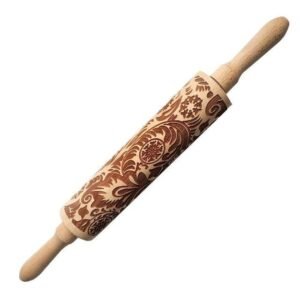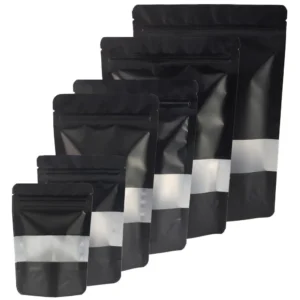- Introduction
- Historical Significance and Evolution
- Bolo Machete Design Characteristics
- Features and Benefits
- Bolo Machete Usage in Agriculture
- Warfare and the Bolo Machete
- Symbolism and Cultural Impact
- Types and Variations of Bolo Machetes
- Bolo Machetes in Popular Culture
- Related Resources and Further Reading
- Conclusion
- FAQs
- Frequently Linked Pages
Introduction
The bolos machete is a versatile cutting tool with a distinctive curved blade. Originating from the Philippines, bolos have been used for centuries for various purposes. Its unique design and tang construction make bolos highly effective in both agricultural and combat applications.
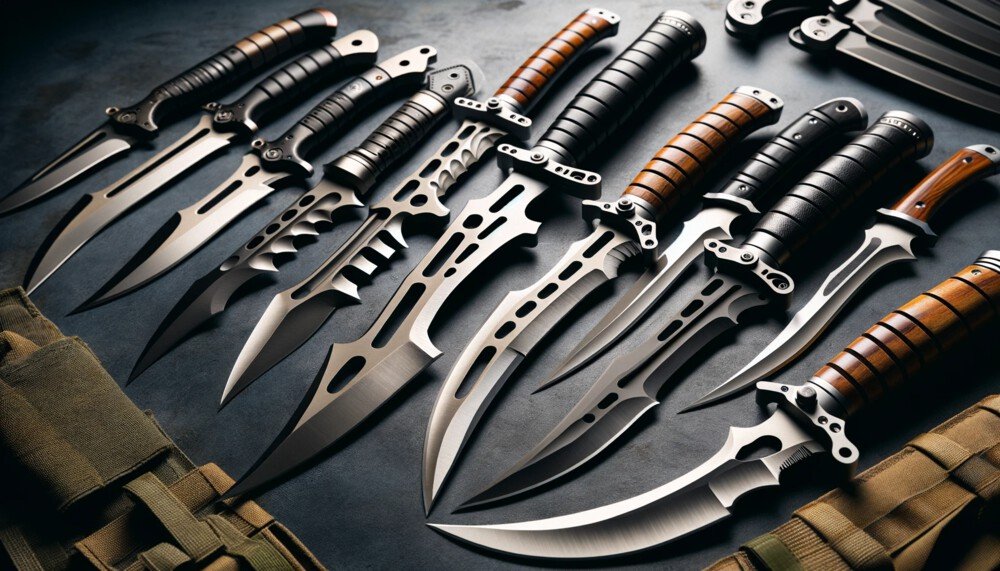
With its curved shape, the bolo machete excels at tasks such as clearing vegetation, chopping wood, harvesting crops, and handling bolos. Farmers rely on bolos for their sharpness and durability to navigate dense jungles and cultivate their land. The weight distribution of bolos allows for powerful swings, making them ideal weapons in combat situations.
Whether you’re a farmer looking to tackle overgrown fields or an adventurer embarking on outdoor expeditions, the bolo machete is a reliable companion that can handle any task at hand. Stay tuned as we delve deeper into the history, uses, and maintenance of this remarkable tool.
Historical Significance and Evolution

Traces back to pre-colonial times
The bolo machete, with its rich history and cultural significance, can be traced back to pre-colonial times in the Philippines. This iconic tool has been an integral part of Filipino culture for centuries, evolving over time to become a symbol of strength and resilience.
Played a crucial role in Filipino uprisings against colonial powers
During the era of Spanish colonization, the bolo machete played a crucial role in Filipino uprisings against colonial powers. It became a weapon of choice for revolutionaries fighting for independence and freedom. With its sharp blade and versatile design, it provided a means for resistance against oppression.
Adapted by different cultures, leading to variations in design
As the bolo machete spread beyond the Philippines, it was adapted by different cultures across Southeast Asia and other parts of the world. This led to variations in design, reflecting the unique needs and preferences of each region. From the Indonesian golok to the Malaysian parang, these variations showcase how the bolo machete has become ingrained in diverse cultures.
Throughout its evolution, one thing remains constant—the bolo machete’s effectiveness as a tool. Its curved blade allows for efficient cutting and chopping tasks, making it ideal for agricultural work such as clearing vegetation or harvesting crops. Its versatility extends beyond farming activities; it is also used for self-defense or survival purposes.
The enduring popularity of the bolo machete can be attributed not only to its practicality but also to its symbolism within various communities. In Filipino culture specifically, owning a bolo machete signifies bravery and honor. It is often passed down through generations as a cherished heirloom—a testament to one’s lineage and heritage.
Beyond its historical significance, the bolo machete continues to find relevance in modern times. It is widely used by farmers, hunters, outdoor enthusiasts, and even martial artists. Its durability and functionality make it a reliable tool in various scenarios, whether it’s clearing a path through dense foliage or preparing firewood for a campfire.
Bolo Machete Design Characteristics
The design of a bolo machete is what sets it apart from other types of machetes. Let’s take a closer look at its key characteristics.
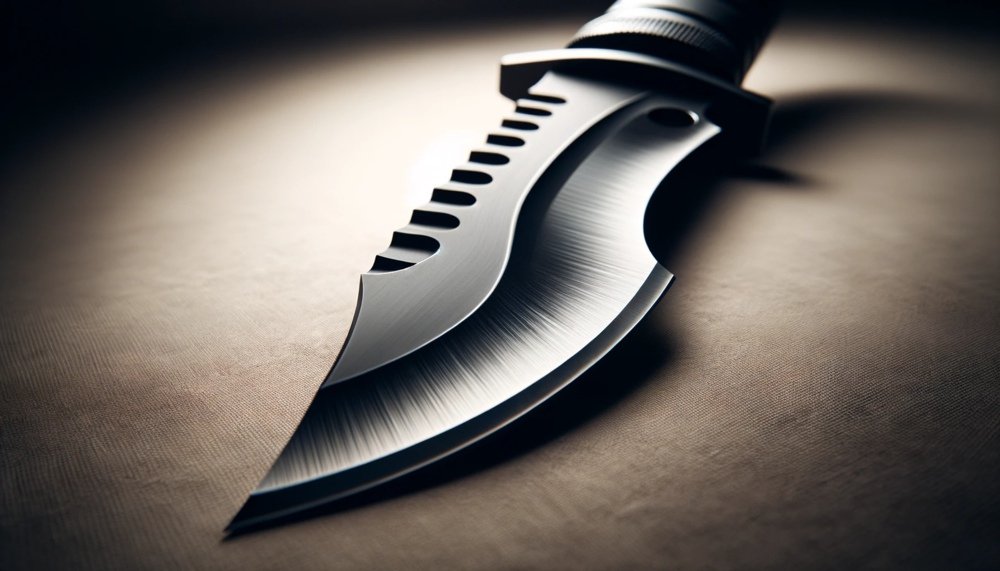
Single-Edged, Heavy Blade with a Forward Curve
One defining feature of the bolo machete is its single-edged, heavy blade that boasts a forward curve. This design allows for efficient chopping and slicing through thick vegetation and dense undergrowth. The weight of the blade aids in generating momentum, making it easier to cut through tough materials like branches or vines. The forward curve enhances the cutting power by concentrating force towards the tip, ensuring effective penetration.
High-Carbon Steel for Durability and Sharpness
To withstand rigorous use and maintain sharpness over time, bolo machetes are typically crafted from high-carbon steel. This material not only offers excellent durability but also retains an edge well, reducing the need for frequent sharpening. High-carbon steel blades can withstand impact and resist chipping or bending, making them ideal for outdoor tasks such as clearing trails or preparing firewood.
Varying Lengths, Weights, Handle Materials, and Overall Shapes
Bolo machetes come in various lengths, weights, handle materials, and overall shapes to cater to different needs and preferences. The length of the blade determines its reach and versatility; longer blades are suitable for clearing larger areas while shorter ones provide better maneuverability in tight spaces. Likewise, the weight affects swing speed and control; lighter models allow for quicker swings while heavier ones offer more power behind each strike.
Handle materials vary from traditional hardwoods to modern synthetic materials like rubber or polymer. Each material provides a unique grip texture and durability level to suit individual preferences and environmental conditions. Bolo machetes may have variations in overall shape – some feature wider blades with a pronounced belly for enhanced chopping ability, while others have narrower profiles designed for precise cutting and slashing motions.
Features and Benefits
Excellent Chopping Power
The bolo machete is designed with a weight-forward design, providing excellent chopping power. This means that the majority of the weight is concentrated towards the front of the blade, allowing for more forceful and effective strikes. Whether you’re clearing vegetation or cutting firewood, this feature ensures that your swings pack a punch.
Versatile Tool for Various Tasks

One of the standout features of the bolo machete is its versatility. It’s not limited to just one specific task but can be used for a range of purposes. Whether you need to clear thick brush and undergrowth in your backyard or prepare firewood for a camping trip, this tool has got you covered. Its wide blade makes it ideal for slicing through vegetation with ease.
Easy Maneuverability and Balance
Maneuverability and balance are crucial. The bolo machete excels in both these aspects. Its design allows for easy maneuvering through dense foliage without getting stuck or weighed down. It offers good balance, ensuring that each swing is precise and controlled.
Durability and Longevity
A reliable tool should be built to last, and the bolo machete delivers on durability. Crafted from high-quality materials such as carbon steel or stainless steel, this machete can withstand heavy use without losing its sharpness or structural integrity. It can handle tough tasks without breaking or bending easily.
Ergonomic Handle Design
To ensure comfortable and secure grip during use, many bolo machetes come equipped with an ergonomic handle design. This means that the handle is contoured to fit comfortably in your hand while providing optimal control over the blade. With a secure grip, you can confidently tackle any cutting task without worrying about slippage.
Bolo Machete Usage in Agriculture
The bolo machete is a versatile tool that finds widespread use among farmers for various agricultural tasks. Let’s delve into how this unique machete contributes to the efficiency and productivity of agricultural practices.
Widely used by farmers for clearing fields and harvesting crops
Farmers rely on the bolo machete as an essential tool for clearing fields and preparing them for cultivation. With its curved blade and substantial weight, the bolo machete can swiftly cut through thick vegetation, making it ideal for removing unwanted plants and shrubs from agricultural land. By effectively clearing the fields, farmers create a favorable environment for their crops to grow without competition for resources such as sunlight, water, and nutrients.
Ideal for cutting through thick vegetation like sugarcane or banana trees
One of the standout features of the bolo machete is its ability to effortlessly slice through dense vegetation. This makes it particularly well-suited for harvesting crops such as sugarcane or banana trees. The sharp blade allows farmers to swiftly sever mature crops from their stalks or trunks with precision. Its design enables efficient cutting motions while minimizing fatigue, allowing farmers to work efficiently even during long hours in the field.
Helps maintain agricultural productivity in rural areas
In rural areas where modern machinery may not be readily available or affordable, the bolo machete plays a crucial role in maintaining agricultural productivity. Its simplicity and effectiveness make it accessible to farmers who may not have access to advanced equipment. Farmers can rely on this traditional tool to carry out various tasks throughout the farming cycle, including planting, weeding, pruning, and harvesting.
The versatility of the bolo machete extends beyond crop-related activities. It can also be utilized for other farm maintenance tasks such as clearing pathways or repairing fences. Its durability ensures that it can withstand rigorous use over time without losing its cutting edge.
Warfare and the Bolo Machete
Utilized as an effective weapon during guerrilla warfare tactics, the bolo machete has played a significant role in various revolutionary movements throughout history. Its affordability and accessibility made it a popular choice among revolutionaries seeking a formidable combat tool.

The bolo machete’s reputation as a deadly weapon instilled fear among opponents on the battlefield. With its long, curved blade and sturdy construction, it was capable of inflicting devastating blows. The machete’s design allowed for efficient chopping and cutting, making it ideal for close-quarters combat.
During guerrilla warfare, where conventional weapons may be scarce or difficult to obtain, the bolo machete became an invaluable asset. Revolutionaries could easily acquire this versatile tool from agricultural areas or local markets, providing them with a reliable weapon that could serve multiple purposes.
The bolo machete’s effectiveness in combat can be attributed to its unique features. A full tang construction ensures strength and durability, enabling the wielder to deliver powerful strikes without fear of the blade breaking or becoming detached from the handle. This feature also enhances control over the weapon during intense combat situations.
In addition to its use as a combat tool, the bolo machete proved instrumental in navigating challenging terrains encountered during guerrilla warfare. Its robust blade could clear dense vegetation and brush with ease, allowing fighters to move swiftly through jungles or forested areas while remaining undetected by enemy forces.
The Katipuneros utilized these bolos not only for combat but also as symbols of their determination and unity. The Gator Bolo’s unique design served as a rallying point for revolutionaries, reinforcing their shared cause and inspiring fear in their adversaries.
Symbolism and Cultural Impact
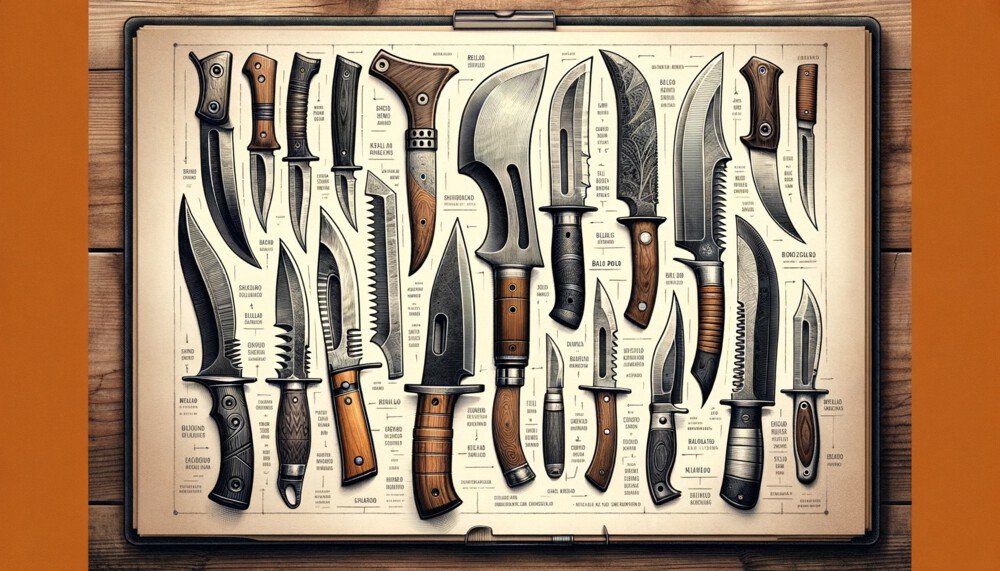
The bolo machete holds immense symbolism and cultural significance in the Philippines. It represents strength, resilience, and national identity, serving as a powerful symbol of Filipino heritage. Throughout history, the bolo machete has been closely associated with heroism during struggles for independence.
During the Philippine Revolution against Spanish colonial rule in the late 19th century, the bolo machete became an iconic weapon used by Filipino revolutionaries. Its effectiveness in close combat made it a symbol of resistance and defiance. The bolo machete was wielded by brave fighters who stood up against oppression and fought for their freedom.
Beyond its role in armed conflicts, the bolo machete holds cultural importance in traditional dances like “Tinikling.” This vibrant dance involves performers skillfully maneuvering between bamboo poles while holding bolo machetes. The rhythmic clashing of the blades against each other creates a mesmerizing spectacle that showcases Filipino culture and heritage.
The symbolism of the bolo machete extends beyond its physical attributes. It embodies the spirit of determination and perseverance that runs deep within Filipino culture. Just as the blade is forged through fire to become strong and sharp, Filipinos have faced challenges head-on, emerging stronger than ever.
Filipinos take pride in their national identity, which is intricately woven into their everyday lives. The bolo machete serves as a reminder of their rich history and shared struggles for independence. It symbolizes unity among Filipinos, regardless of social or economic backgrounds.
Moreover, the cultural impact of the bolo machete can be seen in various art forms such as literature, music, and visual arts. It has inspired countless stories of heroism and acts as a muse for artists seeking to capture its essence on canvas or through words.
In contemporary times, the symbolic power of the bolo machete continues to resonate with Filipinos worldwide. It serves as a reminder of their roots and the values that define them as a people. Whether displayed in homes as a decorative piece or used in traditional ceremonies, the bolo machete remains an enduring symbol of Filipino pride.
Types and Variations of Bolo Machetes
There is a wide array of types and variations available. These versatile tools have evolved over time, reflecting the regional preferences across Southeast Asia. Let’s take a closer look at some of the different types and variations of bolo machetes.
Barong
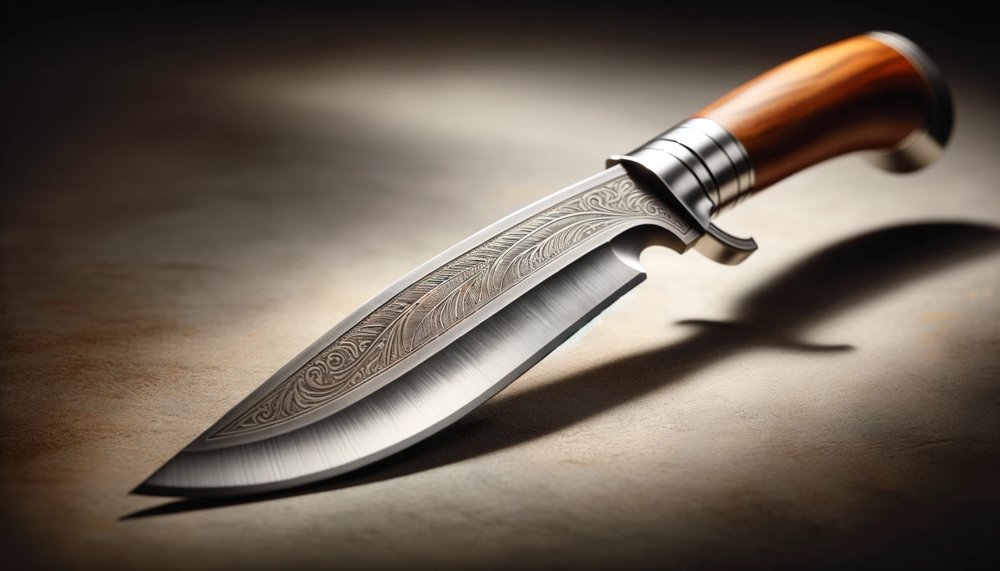
One popular type of bolo machete is the Barong. It originated in the Philippines and features a distinctive leaf-shaped blade with a forward-curved edge. The Barong is known for its excellent chopping power, making it ideal for clearing vegetation or performing heavy-duty tasks.
Itak Tagalog
Another type you’ll come across is the Itak Tagalog. This bolo machete also hails from the Philippines and has a straighter blade compared to the Barong. The Itak Tagalog excels in cutting through thick foliage and can be used for various agricultural purposes such as harvesting crops or trimming branches.
Golok
Moving on to Indonesia, we have the Golok machete. This type typically has a shorter, wider blade compared to other bolo machetes. The Golok’s design makes it well-suited for tasks like chopping wood or preparing food while camping. Its compact size also makes it easier to carry on outdoor adventures.
Parang Latok
In Malaysia, you’ll find the Parang Latok, which features a slightly curved blade with a pointed tip. This type of bolo machete is favored by farmers for its ability to clear vegetation efficiently. The Parang Latok’s unique design allows for precise cutting while maintaining durability.
These are just a few examples of the many types and variations of bolo machetes available in Southeast Asia. Each variation caters to specific tasks based on their design and functionality.
For instance, some bolo machetes are specifically designed for farming purposes, allowing farmers to clear fields and harvest crops with ease. Others are geared towards self-defense, featuring a more robust blade for protection. There are even bolo machetes tailored for hunting, with features like gut hooks or serrated edges to aid in skinning and processing game.
The variations in bolo machetes not only reflect the diverse needs of different regions but also showcase the craftsmanship and ingenuity of the local artisans who create them.
Bolo Machetes in Popular Culture
Frequently depicted in movies and video games as a formidable weapon
Bolo machetes have made their mark on popular culture, frequently appearing in movies and video games as a formidable weapon. These versatile blades are often portrayed in action-packed scenes where they showcase their cutting power and effectiveness. From survival-themed films to intense battle sequences, the bolo machete is often chosen by filmmakers and game designers to add an element of danger and excitement.
In movies such as “Rambo” and “Apocalypse Now,” the bolo machete takes center stage, becoming an iconic symbol of strength and survival. The sight of a rugged protagonist wielding a bolo machete with precision creates an image of resilience and resourcefulness. Its curved blade design allows for powerful swings, making it ideal for combat situations against both human adversaries or dense foliage.
Video games have also embraced the bolo machete as a popular weapon choice. Titles like “Far Cry” and “Resident Evil” feature characters wielding these blades to dispatch enemies or clear paths through dense jungles. The unique shape of the bolo machete adds an element of realism to virtual worlds, enhancing gameplay experiences for players seeking authenticity.
Featured in literature and artwork showcasing its historical significance
Beyond the realm of moving images, the bolo machete has found its way into literature and artwork, showcasing its historical significance. In books such as “The Beach” by Alex Garland or “Heart of Darkness” by Joseph Conrad, the presence of the bolo machete underscores themes of exploration, adventure, and survival. These narratives often depict characters relying on this tool to navigate treacherous landscapes or overcome obstacles.
Artwork inspired by historical events also pays homage to the bolo machete’s role in shaping cultures around the world. Paintings depicting indigenous tribes using these blades for hunting or agricultural purposes highlight their practicality and cultural importance. The bolo machete becomes a symbol of tradition and heritage, representing the resilience and ingenuity of communities who have relied on it for generations.
Symbol of strength and survival in various forms of media
In addition to its practical use as a tool or weapon, the bolo machete has become a symbol of strength and survival in various forms of media. Its presence in movies, video games, literature, and artwork reinforces the idea that possessing a bolo machete signifies resourcefulness, adaptability, and the ability to overcome challenges.
Related Resources and Further Reading
Books, Articles, and Documentaries
If you’re looking to delve deeper into the world of bolo machetes, there are plenty of resources available. Books, articles, and documentaries provide more in-depth information about the history, usage, and cultural context of these versatile tools. From historical accounts to practical guides on using a bolo machete effectively, these resources can enhance your understanding.
Online Forums and Communities
Sometimes the best way to learn is by engaging with others who share your interest. Online forums and communities dedicated to survival skills or bushcraft often have discussions about bolo machetes. Here you can find valuable insights from experienced users who can offer tips on sharpening techniques, maintenance practices, or even recommendations for specific brands or models.
Historical Archives
To truly grasp the significance of the bolo machete in its cultural context, historical archives can be a treasure trove of information. These archives may contain documents, photographs, or artifacts that shed light on how this tool was used in different regions around the world. Exploring these archives can provide fascinating insights into the evolution and impact of the bolo machete throughout history.
These additional resources can be invaluable. Whether you prefer reading books or articles for an in-depth understanding or engaging with online communities for real-life experiences and advice, there’s something out there for everyone interested in this unique tool.
Conclusion
The fascinating world of bolo machetes! We’ve explored their historical significance, design characteristics, and various uses in agriculture and warfare. We’ve also delved into the symbolism and cultural impact of these versatile tools. From the classic Filipino bolo to the modern variations found in popular culture, bolo machetes have left an indelible mark on society.
But this journey doesn’t end here. Now that you have a deeper understanding of bolo machetes, why not try one out for yourself? Whether you’re a farmer looking for a reliable tool or an enthusiast interested in adding a unique piece to your collection, bolo machetes offer both functionality and aesthetic appeal. So go ahead, grab a bolo machete and experience the power and versatility that has made it an icon throughout history.
FAQs
What is a bolo machete?
A bolo machete is a type of large knife characterized by its heavy, wide blade and distinctive curved shape. It originated in the Philippines and is commonly used for cutting vegetation, clearing paths, and agricultural tasks.
How is a bolo machete different from other machetes?
Unlike traditional machetes with straight blades, the bolo machete has a curved blade that resembles a scimitar. This unique design allows for powerful swings and efficient cutting through dense foliage or woody materials.
What are the common uses of a bolo machete?
The bolo machete is versatile and widely used for various purposes. It is ideal for clearing brush, chopping wood, harvesting crops, camping activities, survival situations, and even self-defense due to its formidable size and sharpness.
Is it easy to handle a bolo machete?
Yes! The ergonomic design of the bolo machete makes it relatively easy to handle. Its weight distribution ensures balance during swings, reducing fatigue. However, it’s always important to practice proper grip techniques and exercise caution when using any bladed tool.
How do I maintain a bolo machete?
To keep your bolo machete in optimal condition, regularly clean it after use to remove dirt and moisture. Apply lubricating oil on the blade to prevent rusting. Sharpen the edge using appropriate tools like sharpening stones or files as needed. Store it in a dry place away from humidity.
Frequently Linked Pages
1. Cold steel machetes – Cold Steel Machetes: A Guide To Reliable Blades For Your Outdoor Adventures
2. Condor machete – Condor Machete: Quality Blades For Outdoor Enthusiasts




